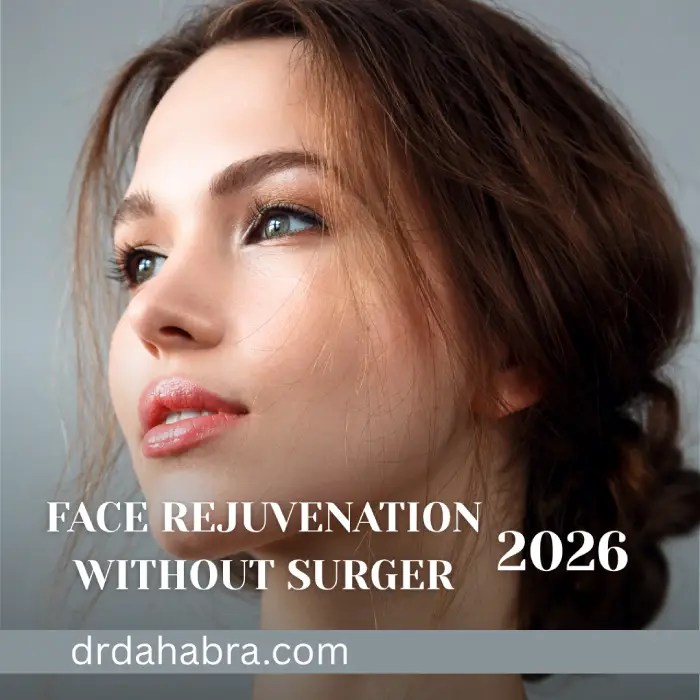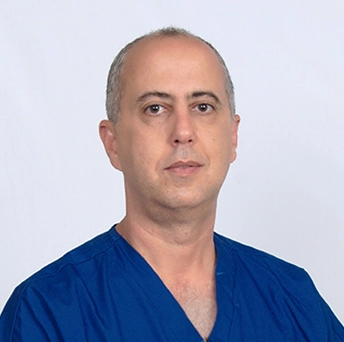Look 10 Years Younger: Best Non-Invasive Face Rejuvenation Treatments of 2026
What is face rejuvenation without surgery?
Unlock a youthful look with zero downtime! Nonsurgical face rejuvenation refers to treatments that lift, tighten, and refresh your face without the incisions, stitches, or long recovery associated with a traditional facelift. This article discusses Face Rejuvenation Without Surgery or Downtime.
Options like injectables (Botox, rellenos dérmicos), energy‑based devices (lasers, ultrasound, radiofrequency, microneedling), and chemical peels address wrinkles, volume loss, and skin texture, often with immediate or very rapid return to daily life.
Tired of sagging piel?
Discover the top nonsurgical caralift alternatives with instant results and no recovery time: the ultimate guide to face rejuvenation without surgery. Utilizing state-of-the-art technologies like EMFace, RF microneedling, and liquid facelifts, among others, you can achieve a visibly younger appearance with minimal disruption to your schedule.
Estos treatments target fine lines and deeper skin concerns by stimulating collagen production, relaxing muscles, or resurfacing outer layers of skin. Many deliver results within days and come with so‑called “zero downtime skin tightening” so you can step back into your life right away.
Índice
1. How do Botulinum toxin injections (e.g., Botox, Dysport) work?
2. Where are dermal fillers most effective for a nonsurgical lift?
3. How do fractional lasers improve tone and texture?
4. What are radiofrequency (RF) treatments , and how do they tighten skin?
5. How does High‑Intensity Focused Ultrasound (HIFU) deliver lift?
6. What is RF microneedling , and why is it a game‑changer?
7. How do advanced chemical peels and medical facials fit into a rejuvenation plan?
8. What is a ”liquid facelift,” and how does it restore volume?
9. Are thread lifts a genuine ”no‑downtime” facelift alternative?
10. What is the role of Platelet‑Rich Plasma (PRP) in nonsurgical anti‑aging?
11. What is a ”nonsurgical rhinoplasty,” and is it safe?
12. Should you combine Botox and fillers for optimal results?
13. What are the pros and cons of avoiding surgery entirely?
14. How do non‑invasive treatments compare to a traditional facelift?
15. Preguntas más frecuentes (FAQ)
16. Conclusión
17. Referencias
1. How do Botulinum toxin injections (e.g., Botox, Dysport) work?
Botulinum toxin injections work by temporarily relaxing the facial muscles responsible for dynamic wrinkles, such as patas de gallo o líneas de la frente.
When those muscles contract less, the overlying skin smooths out, and new creasing slows. These treatments have become foundational in nonsurgical rejuvenation plans and are often the first step for prevention.
Results typically appear within a few days and last approximately three to four months (sometimes slightly longer), depending on the dose, technique, and individual metabolism.
A key benefit is virtually zero downtime: you walk in, get treated, and may experience some very mild redness, then you’re back to your routine. Because Botox is highly effective for dynamic lines, it pairs well with other treatments that address volume loss, laxity, or texture.
2. Where are dermal fillers most effective for a nonsurgical lift?
Dérmico rellenos are superb when the primary issue is lost volume, flattened cheeks, hollow under‑eyes, or thinning lips. Fillers made of hyaluronic acid offer immediate volume and a smooth appearance, while biostimulatory fillers, such as Sculptra or Radiesse, stimulate collagen over time for a longer-lasting lift.
Standard target zones include the cheeks (cheek volume restoration), lips (best nonsurgical lip lift), nasolabial folds, marionette lines, and jawline contours. Because they restore structure, fillers can lift subtly without pulling skin, a key in nonsurgical facelift alternatives.
Long-lasting rellenos inyectables are increasingly popular: while many require maintenance, some formulations now last a year or more, offering a nonsurgical route to face rejuvenation that combines immediate and gradual improvements.
3. How do fractional lasers improve tone and texture?
Fractional laser treatments remove or micro‑injure the outer layers of skin, prompting regeneration and renewed collagen and elastin production.
As a result, skin tone improves, texture becomes smoother, and arrugas become less noticeable. These tools are invaluable for rejuvenating sun‑damaged, rough, or irregular skin surfaces.
In the context of zero-downtime skin tightening and non-invasive treatments, there are non-ablative laser resurfacing options (with less downtime) and more aggressive ablative procedures (with more downtime but more profound effects). Láseres fraccionados, such as Fraxel, are often featured among the best lasers for wrinkles.
En fractional lasers are effective, multiple sessions may be required, and healing, though faster than surgery, may still involve a few days of side effects (redness, peeling), so you’ll want to plan accordingly in your nonsurgical plan.
4. What are radiofrequency (RF) treatments, and how do they tighten skin?
Radiofrequency treatments deliver heat energy into the skin’s deeper layers, estimular el colágeno and elastin remodeling, which is how they tighten and firm loose skin. This technology falls under the umbrella of radio‑frequency skin tightening, a popular nonsurgical option for mild to moderate laxity.
Devices such as Thermage and RF microneedling platforms (e.g., Morpheus8) combine the heating effect of RF with controlled injury to further enhance results. The attractiveness here lies in tiempo de inactividad mínimo and the ability to treat jowls, the lower face, and neck for a contouring effect without incisions.
Although results may take weeks to months to show (as collagen rebuilds), RF treatments are an excellent part of a non-invasive face lift plan when surgery is not desired and downtime must be minimal.
5. How does High‑Intensity Focused Ultrasound (HIFU) deliver lift?
HIFU treatments like Ultherapy deliver ultrasound energy deep into the skin (including the superficial muscular aponeurotic system) to estimular el colágeno production and tissue contraction. This form of skin tightening is another pillar for nonsurgical rejuvenation with no downtime.
Because the energy targets deeper support structures, HIFU is especially effective for lifting brows, jawlines, and necks, making it a contender when sagging contours are the concern (for example, nonsurgical jowl treatment or a minimally invasive neck lift with no downtime).
The trade-off: You may experience some discomfort during the procedure, and visible effects may accumulate over a few months. It works best in patients with early to moderate laxity rather than advanced sagging.
6. What is RF microneedling , and why is it a game‑changer?
RF microneedling combines tiny needles (microneedling) with radiofrequency energy to create controlled micro-injuries and deep heating, two powerful triggers for colágeno and elastin production. Treatments such as Morpheus8 are among those at the forefront of skin tightening and contouring.
Compared to traditional microneedling, RF microneedling penetrates deeper, delivers heat, improves texture, minimizes pores, and tightens the skin simultaneously, making it a robust component of the best non-invasive lifting facial strategy.
Because the downtime is relatively short (often just a few days of redness/swelling) and the effect builds over weeks, it suits those seeking “minimal recovery face rejuvenation.” Treatment cost‑wise (radiofrequency microneedling cost) varies widely depending on device, provider, and area treated.
7. How do advanced chemical peels and medical facials fit into a rejuvenation plan?
Medical-grade chemical peels utilize the controlled application of acids or agents to gently remove the top skin layers, revealing fresher, firmer skin underneath. Over time, they reduce large pores, daño solar, wrinkles, and uneven tone, making them an excellent adjunct to other treatments.
In a comprehensive nonsurgical rejuvenation plan, peels and medical facials help enhance the skin’s surface quality, preparing it for deeper lifts or complementing volume treatments. They are less about lifting and more about refinement.
While many are marketed as minimal downtime, higher-strength peelings may need some healing time. Still, they fit under the concept of “zero downtime skin tightening” when chosen appropriately for your schedule and skin type.
8. What is a ”liquid facelift,” and how does it restore volume?
A “liquid facelift procedure” refers to the use of injectables (often a combination of dermal fillers and sometimes neuromodulators) to lift, contour, and restore youthful volume without the need for surgery. The aim is rejuvenation via volume replacement rather than skin removal or incision.
By focusing on areas such as cheek volume restoration, temple hollowing, jowl softening, and jawline contouring, the liquid facelift offers a nonsurgical alternative to traditional facelifts. Because fillers are placed strategically, you achieve a subtle lift and safely reshape your appearance.
Results are immediate, and the recovery is minimal (bruising/swelling possible but brief). Because you’re dealing with injectables, you may require maintenance, and the results typically last fewer years than those of a surgical lift.
However, the appeal is evident for many seeking minimal recovery who face rejuvenation.
9. Are thread lifts a genuine ”no‑downtime” facelift alternative?
Thread lifts (such as the PDO thread lift) insert dissolvable sutures under the skin to lift sagging areas and trigger collagen production. They offer a middle ground between injectables and surgery and are often pitched as nonsurgical “mini lifts.”
While downtime is significantly less than that of a surgical facelift, labeling thread lifts as “zero downtime” may be a stretch; minor swelling, tenderness, or bruising may still occur. That said, they are far less disruptive and may offer a meaningful lift for mild to moderate laxity.
Results vary in longevity and depend heavily on the practitioner’s skill and the patient’s anatomy. For individuals seeking a nonsurgical jowl treatment or jawline contouring without surgery, elevadores de rosca can be a valuable option, with the caveat that some results may still require surgical intervention.
10. What is the role of Platelet‑Rich Plasma (PRP) in nonsurgical anti‑aging?
PRP uses your own blood components (platelets) to release growth factors that support tissue repair, collagen production, and salud de la piel. In the context of nonsurgical face rejuvenation, it is often used in conjunction with microneedling or injected into areas with thinning skin or mild laxity.
En PRP doesn’t lift in the same way that a filler or RF treatment might, it improves skin quality, texture, and tone, thereby enhancing overall rejuvenation and potentially boosting the results of other treatments.
The attraction: minimal downtime, minimal risk (since you’re using your own tissue), and a regenerative approach. For those seeking a more holístico anti‑aging strategy, combining PRP with other non‑invasive treatments can be highly effective.
11. What is a ”nonsurgical rhinoplasty,” and is it safe?
A nonsurgical rhinoplasty uses dermal fillers (often hyaluronic acid) to reshape the nose without surgery. It’s popular for subtle enhancements, smoothing humps, lifting a droopy tip, or improving symmetry.
As long as it’s performed by an experienced injector familiar with nasal anatomy and using proper technique and safety protocols, the procedure is generally considered safe. Expect minimal downtime, and results are generally visible immediately.
It’s essential to acknowledge limitations: surgery won’t significantly reduce size or address internal nasal structure issues, as it remains the primary route for those concerns. However, for many who desire subtle refinement with minimal downtime, it’s a brilliant addition to the nonsurgical rejuvenation toolkit.
12. Should you combine Botox and fillers for optimal results?
Absolutely, combining Botox (or other neuromodulators) with dermal fillers is often referred to as a “liquid lift” approach and is one of the most effective ways to achieve comprehensive rejuvenecimiento facial no quirúrgico. The rationale: Botox addresses the motion and muscle‑induced wrinkles, while fillers address volume loss and contours.
By marrying both, you tackle multiple aging mechanisms simultaneously: muscle contraction, collagen loss, and fat/volume shift. Many clinics promote this “dual‑approach” for lasting, natural‑looking results and fewer signs of surgery.
Of course, it’s vital to have an individualized treatment plan by a qualified provider. Overdoing volume or misusing neuromodulators can lead to a “done” look.
The best non-invasive face lift results occur when everything is balanced, subtle, and well-planned.
13. What are the pros and cons of avoiding surgery entirely?
Pros: Nonsurgical rejuvenation offers minimal downtime, lower risk, less discomfort, and typically lower coste. You can attend work or social life soon after, making the concept of “zero‑downtime skin tightening” very appealing.
Many treatments can be adjusted, combined, and repeated as needed to achieve optimal results.
Cons: The lift achieved is generally less substantial than that of a surgical facelift. There’s a need for maintenance treatments every year or every other year.
Also, for advanced sagging, excess skin, or deep structural issues, nonsurgical options may not suffice, and you might still consider surgery.
In short, if you’re looking for meaningful improvement with minimal interruption, nonsurgical is a fantastic route. But if your concerns are significant, the best nonsurgical facelift might delay but not eliminate the need for later surgery.
14. How do non‑invasive treatments compare to a traditional facelift?
A traditional facelift involves incisions, repositioning of skin and fat, sometimes muscle tightening, and removal of excess skin, resulting in dramatic, long-lasting results for significant aging changes.
In contrast, non‑invasive treatments (injectables, lasers, RF, ultrasound) focus on stimulation and support rather than structural repositioning.
The gap between them lies in recovery time, cost, risk, downtime, and longevity. Surgery demands weeks of healing, swelling, and a higher cost.
Nonsurgical treatments allow you to walk out and resume most activities. But results may be subtler and will likely require maintenance.
Many patients use non-invasive treatments to delay surgery, maintain their results, or treat early signs of aging.
In 2026, the best non-invasive face lift approaches offer a compelling alternative, especially when you want excellent rejuvenation without the downtime associated with surgery.
15. Frequently Asked Questions (FAQs) about Face Rejuvenation Without Surgery or Downtime
Q1. ¿Cuál es la mejor face rejuvenation without surgery?
Respuesta concisa: Lo mejor face rejuvenation without surgery is a personalized combination of injectables, energy‑based treatments, and skin‑quality procedures tailored to your needs.
Respuesta detallada: There is no one-size-fits-all “best” treatment; the ideal nonsurgical approach depends on your specific concerns (volume loss, sagging, texture, wrinkles), your skin type, your budget, and your tolerance for downtime. For example, if you have dynamic forehead lines, you might start with Botox; if you have cheek hollowing, you might add dermal fillers; if you have sagging jowls, you might consider HIFU or RF microneedling.
An experienced practitioner will create a personalized plan that combines the best nonsurgical facelift alternatives tailored to your specific goals.
Q2. Is there a way to tighten skin on the face without surgery?
Respuesta concisa: Yes, treatments such as HIFU (Ultherapy), RF devices (Thermage), and RF microneedling can effectively tighten facial skin without the need for surgery.
Respuesta detallada: Nonsurgical skin tightening uses focused energy (radiofrequency or ultrasound) to heat the deeper layers of skin, stimulating collagen and elastin production, which gradually firms and lifts the area.
According to the American Board of Cosmetic Surgery, this approach is ideal for mild to moderate skin laxity and offers little to no downtime. It’s essential to note that for advanced skin laxity, surgery remains the gold standard.
Q3. How long do nonsurgical face lifts ¿último?
Respuesta concisa: Results from nonsurgical face lifts typically last from a few months up to a year or more, depending on treatment type and maintenance.
Respuesta detallada: The longevity depends on the modality: Botox may last around 3–4 months, while fillers might last 6–18 months, depending on the type; energy-based treatments like RF or HIFU may show results lasting up to a year or slightly more before a touch-up is beneficial.
Because nonsurgical treatments don’t remove excess skin as effectively as surgery does, maintenance and repeat sessions are part of the plan.
Q4. Why is “Zero‑Downtime” such a massive trend right now?
Respuesta concisa: Zero‑downtime treatments are trending because people want effective results without disrupting work, social life, or family commitments.
Respuesta detallada: In today’s fast‑paced lifestyle, many patients seek aesthetic improvements that don’t require weeks of healing or visible downtime. Nonsurgical treatments marketed as “zero downtime skin tightening” or “no recovery face rejuvenation” fit this model: you can undergo a lunchtime procedure and return to normal the same day.
This accessibility expands the appeal of nonsurgical face rejuvenation and drives demand.
Q5. How does Botox smooth fine lines without a frozen look?
Respuesta concisa: When administered skillfully, Botox relaxes targeted muscles while preserving natural movement, thereby smoothing lines without freezing the face.
Respuesta detallada: The key is dose and placement. A well-trained provider will inject the right amount of botulinum toxin into the specific muscle fibers responsible for dynamic lines, while avoiding over-treatment of surrounding muscles.
This balanced approach allows you to maintain expressiveness while eliminating or softening wrinkles. In nonsurgical rejuvenation, this nuance is essential for a refreshed yet natural apariencia.
Q6. What is the most effective nonsurgical treatment for under-eye bags and hollowness?
Respuesta concisa: Rellenos dérmicos (especially hyaluronic acid) are often the best nonsurgical choice for correcting under‑eye hollows, while energy‑based treatments may help for skin laxity and mild bags.
Respuesta detallada: Under‑eye hollows generally result from volume loss, and fillers can restore that with immediate effect in many cases. For bags caused by skin laxity or fat protrusion, combining fillers with RF microneedling or laser resurfacing can give better results.
The provider must carefully evaluate the anatomy because misplaced filler in the tear trough can cause puffiness. A personalized plan ensures a safe and optimal outcome.
Q7. How can you effectively tighten a turkey neck without surgery?
Respuesta concisa: You can tighten a “turkey neck” non‑surgically using HIFU (Ultherapy), RF skin tightening, and RF microneedling combined with skin‑quality treatments.
Respuesta detallada: The neck area often shows laxity and loose skin. Devices like Ultherapy deliver ultrasound energy deep into the neck to stimulate lifting and firming of the tissue.
RF skin tightening targets the dermis and underlying collagen. For mild to moderate laxity, these nonsurgical methods, especially when paired with skin‑quality treatments, can delay surgery.
According to the ABCS, nonsurgical skin tightening is effective for moderate laxity but less so for advanced sagging.
Q8. What treatments are most effective for minimizing deep nasolabial folds?
Respuesta concisa: Deep nasolabial folds are best addressed with dermal fillers (volume restoration), possibly biostimulatory fillers, and often combined with skin‑tightening treatments.
Respuesta detallada: Nasolabial folds deepen due to fat/volume loss, skin laxity, and repetitive motion. Injecting a filler beneath these folds or in adjacent zones (cheeks, mid‑face) restores support and lifts the fold.
Complemented with RF microneedling or fractional laser, this treatment can improve the surrounding skin texture and tone, helping the overall result last longer and appear more natural.
Q9. What are the best options for improving acne scars and skin texture?
Respuesta concisa: RF microneedling, fractional laser resurfacing, and advanced chemical peels are among the top nonsurgical treatments for acne scars and uneven skin texture.
Respuesta detallada: Acne scars and texture irregularities respond well to treatments that stimulate collagen and remodel tissue. Devices like Morpheus8 (RF microneedling) penetrate deep and stimulate collagen more aggressively; fractional lasers remove damaged skin layers and activate healing; chemical peels enhance surface renewal.
A skilled provider may combine these with optimized cuidado de la piel for the best results.
Q10. How do I get rid of a double chin with only minimal downtime?
Respuesta concisa: Nonsurgical options for reducing a double chin include injectable fat reduction (e.g., Kybella), CoolSculpting, HIFU, or RF devices, all with minimal downtime.
Respuesta detallada: A chin or jowl area presenting fullness can be treated non‑surgically by targeting fat and skin laxity together. Fat-dissolving injectables, such as cryolipolysis, reduce the fat layer, while HIFU or RF skin tightening addresses the residual loose skin.
This combined approach provides a less invasive alternative to a surgical lifting de cuello, aligning with the nonsurgical rejuvenation mindset.
Q11. What is the absolute best nonsurgical procedure for deep smile lines?
Respuesta concisa: Deep smile lines (nasolabial folds) are best treated with a combination of dermal fillers for lift and volume plus skin‑quality treatments like RF microneedling or lasers.
Respuesta detallada: Deep smile lines are complex; they combine volume loss, fat descent, and skin laxity. Fillers restore underlying support and lift the fold from beneath, giving immediate effect.
For longer-lasting improvement and better skin around the area, adding skin-tightening treatments (such as RF microneedling) or fractional laser resurfacing can maximize outcomes and durability in your nonsurgical rejuvenation plan.
Q12. Is SylfirmX really worth the cost, or is regular microneedling just as good?
Respuesta concisa: Sylfirm X (a combined RF microneedling device) provides deeper and more consistent results compared to regular microneedling, making it a worthwhile investment when skin laxity and texture issues are significant.
Respuesta detallada: Regular microneedling creates micro‑injuries and estimula el colágeno, but when RF energy is added (as in Sylfirm X or similar), deeper tissue heating improves tightening and long‑term remodeling.
For minimal texture issues, regular microneedling may suffice. However, if you’re looking to firm, contour, and address more pronounced skin laxity, then the enhanced technology may deliver a better return on investment within a nonsurgical rejuvenation plan.
Q13. What’s the most effective treatment for tightening the skin on the neck without a neck lift?
Respuesta concisa: The most effective nonsurgical neck tightening treatments involve HIFU (Ultherapy), RF microneedling, and RF skin tightening devices, all of which are tailored to the anatomy of the neck.
Respuesta detallada: The neck has thin skin, minimal fat, and visible movement, so treatments must be carefully applied to ensure optimal results. HIFU can target deeper layers, RF microneedling can firm the superficial layers, and RF skin tightening devices can improve tone.
While results won’t match those of a surgical neck lift for advanced sagging, for early-to-moderate laxity, they offer a compelling nonsurgical option with minimal downtime.
Q14. How can I maintain my results with an at‑home medical‑grade skincare routine?
Respuesta concisa: Maintenance includes daily broad‑spectrum sunscreen, retinoids, antioxidants, and consistent skincare plus follow‑up in‑office treatments to preserve the investment you made in nonsurgical rejuvenation.
Respuesta detallada: Your in‑office procedures build a foundation. To prolong results, your daily routine matters. Use topical retinoids (to encourage collagen), vitamin C/ C/antioxidants (to protect), proper moisturizers, and broad‑spectrum SPF (to prevent further damage).
Avoid smoking and excessive sun exposure. Regular touch‑up treatments (injectables, energy work) as set by your provider will also help keep the effect fresh.
Q15. How do I select the most suitable nonsurgical treatment for my age and skin ¿tipo?
Respuesta concisa: Select a treatment tailored to your specific aging concerns (wrinkles, volume loss, laxity, texture), skin type, downtime tolerance, and budget, following a thorough consultation with a qualified provider.
Respuesta detallada: Age and skin type matter.
In your 30s, you may focus on early lines and prevention (Botox, light fillers, skin‑quality treatments).
In your 40s, you may need more volume restoration and mild lifting (fillers + RF microneedling).
In your 50s and beyond, laxity and sagging become more pronounced (HIFU, thread lifts, or combined treatments).
Your provider will assess skin thickness, elasticity, volume loss, and skin discoloration, then match one or more of the best nonsurgical face lift options (e.g., Ultherapy vs Morpheus8) accordingly.
16. Conclusion: Face Rejuvenation Without Surgery or Downtime
In the realm of nonsurgical face rejuvenation, we’ve reached a dynamic and powerful era.
With technologies and techniques like nonsurgical facelift alternatives, best non‑invasive face lift strategies, radiofrequency microneedling cost considerations, zero downtime skin tightening, Ultherapy vs Morpheus8 comparisons, dermal fillers for lifting, liquid facelift procedure options, nonsurgical jowl treatment, collagen induction therapy, cheek volume restoration, professional chemical peel sessions, best laser for wrinkles, facial skin tightening devices, no downtime neck lift protocols, minimal recovery face rejuvenation, best nonsurgical lip lift opportunities, PDO thread lift results, Botox alternatives for forehead, and long‑lasting injectable fillers, you have an extensive toolkit for achieving a refreshed, younger‑looking version of yourself without going under the knife.
The beauty of these nonsurgical options is that they allow you to continue your life, work, social commitments, and family, while enhancing your appearance with minimal interruption.
If you choose wisely, combine the correct modalities, and stay consistent with maintenance and cuidado de la piel, you can dramatically slow the visible signs of aging and enjoy a youthful profile with a fraction of the downtime and risk of surgery.
Ultimately, your best outcome comes from partnering with an experienced, credentialed provider who understands your anatomy, goals, and lifestyle.
With the right plan in place, you can confidently step into 2026 looking and feeling your best, revitalized, lifted, and refreshed, all without the need for a scalpel.
We have covered everything about Face Rejuvenation Without Surgery or Downtime.
Face Rejuvenation Without Surgery or Downtime
Look 10 Years Younger: Best Non-Invasive Face Rejuvenation Treatments of 2026 with Dr. Dahabra. ¿A qué esperas para liberar tu belleza?
Llámenos ahora al (954) 595-2607 o reserve online. Su viaje comienza con sólo un clic o una llamada.
Abraza la belleza, abraza la innovación - Embrace You.
17. Referencias
High‑Intensity Focused Ultrasound for the Treatment of Wrinkles and Skin
Laxity: A Pilot Study (H. Park et al., Hanyang Medical Hospital)
This study evaluated the use of HIFU in Asian skin (20 patients) for facial wrinkles and laxity, demonstrating clinical improvement, particularly in the jawline, cheek, and perioral areas, with mild and transient side effects.
Simplifying Injectables for Volumetric Rejuvenation of Face
(S. Z. Arsiwala et al., 2018)
This article discusses facial restaurador volume (via fillers) as a key aspect of rejuvenation, illustrating how volumetric approaches work in nonsurgical lifts.
(Various authors)
A multicenter study (499 patients) on RF microneedling devices (INFINI system) demonstrated safety and efficacy in wrinkles and skin texture.
Aplicación de modalidades no quirúrgicas para mejorar el envejecimiento facial
(2019 review)
A comprehensive review summarizing minimally invasive and nonsurgical approaches (injectables, energy‑based devices) for facial aging treatment.
Non‑invasive Facial Rejuvenation
Part 3: Physician‑Directed Skin Quality Enhancement Using Lasers, Chemical Peels, and Other Modalities
This article reviews non‑invasive modalities (lasers, peels) for face rejuvenation, covering mechanisms, indications, and complications.
A Systematic Review of High‑Intensity Focused Ultrasound (HIFU) in Skin Tightening and Rejuvenation
(D. Haykal et al., 2025)
This recent systematic review evaluated the efficacy of HIFU, particularly for the lower face, neck, and periorbital regions, supporting its role in nonsurgical rejuvenecimiento facial.
Achieving both volume and lifting effects with filler treatments
(G. W. Hong et al., 2024)
This study describes how combining soft and firm hyaluronic acid fillers can achieve lift and volume simultaneously (cheeks, jawline) in a nonsurgical approach.
Volume Restoration in Mid‑Facial Aging
(A. Diaspro et al., 2025)
This observational study using HA fillers measured volumetric restoration in the mid-face via 3D analysis, demonstrating lasting changes in volume that exceeded the injected amount.
Complications and Risks of High‑Intensity Focused Ultrasound (HIFU) for Skin Tightening
(F. Biskanaki et al., 2025)
This literature review compiled 22 studies (2010‑2025) to assess the safety profile of HIFU in aesthetic skin tightening, noting mostly mild/transient complications when performed by trained providers.
(2022)
This study reports on facial skin laxity/wrinkles treatment with a novel fractional RF microneedling device (ultrathin electrodes), presenting histologic evidence of dermal remodeling.




